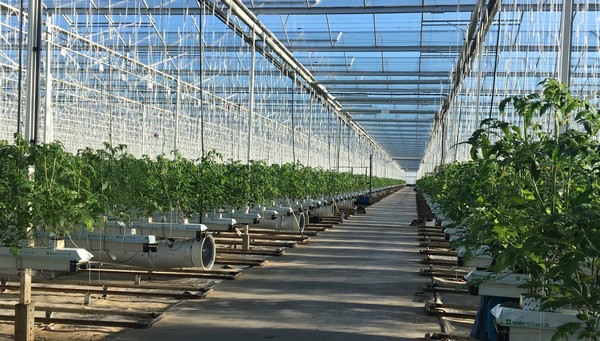Over recent months the spotlight has been on the Net Zero agenda. This has made commercial horticultural businesses increasingly focus on their own carbon footprint and how the industry can meet the UK government target of achieving a net zero economy by 2050; even more so the NFU target of 2040.
Proper assessment of carbon footprint is a key consideration in this journey, however, it is very involved and will not, on its own, provide recommendations for reduction of emissions to help reach the Net Zero goal. Carbon capture, renewable energy production, and improvements to productivity and land management will all help the farming sector reduce carbon emissions. But what does this practically mean for growers and maintaining a sustainable business?

Under the remit of the GrowSave project, AHDB has facilitated two recent sessions with NFU energy to explore the topic of Net Zero in the context of horticultural production, to provide more practical recommendations to help growers begin their journey towards the Net Zero target, and discuss the best options for carbon auditing tools for the horticultural industry.
The Taking steps towards Net Zero webinar, held in January 2021, examined the principles of net zero, the key considerations for carbon auditing, and some of the practical steps individual businesses can take in cutting carbon and reducing their emissions.
The NFU Energy team highlighted some key steps you can take:
- Firstly, check your understanding - what is net zero? Familiarise yourself with the Greenhouse Gas Protocol and the scopes for monitoring carbon emissions
- Know what you’re dealing with in your business – make a list of all your inputs that can be emissions sources, e.g. fertiliser, pesticides, growing media, water, packaging etc
- Make a start somewhere! Energy is one of the biggest considerations for protected cropping growers – you know how much energy you are using (fuel and electricity), so quantify and record it and then consider how to streamline your use
- Start asking for the carbon credentials of the businesses and products that are part of your supply chain and consider alternatives for the highest emitting ones where possible.
Overall, understand the principles, measure your activity, reduce your inputs, increase efficiencies, and then consider measures to offset your carbon emissions.
Webinars
In the follow-up podcast Growsave-ing carbon? Net zero and what it means for horticultural production, NFU energy and Neame Lea (an ornamentals growing business), explored the topic of reaching the carbon emissions targets further. With increasing pressures from retailers and consumers, which are likely to only intensify in the coming years, as well as their own motivation to operate in a way that is as environmentally conscious as possible, Neame Lea decided to get on the front foot and took an opportunity to collaborate with Leeds University to carbon audit their business. Neame Lea discuss their rationale for their proactive approach to the challenge of net zero and their hope to develop horticulture specific carbon auditing tool, which could benefit the wider industry.
For protected horticultural production, energy consumption remains the dominant part of growers’ carbon emissions, so Jon Swain (NFU energy) delves into this issue further during his session the Protected vine crops industry highlights webinar. He specifically discusses the latest thinking and challenges around reducing carbon emissions from energy requirements, especially in the context of electricity grid decarbonisation and reduced support for renewable heat. The recordings will shortly be available via the events archive.

 NFU
NFU AHDB
AHDB